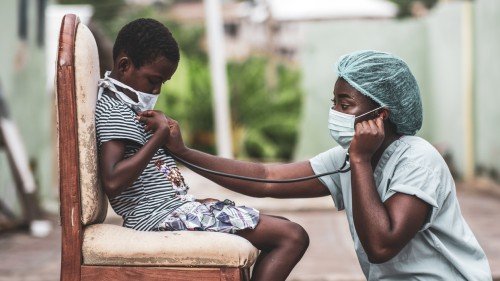
Combating Epidemics and Pandemics in Africa
- September 26, 2025
- Strengthening Local Laboratories
Africa faces recurring threats from epidemics and pandemics, with recent outbreaks, such as cholera, Ebola, mpox, Lassa fever and dengue, underscoring gaps in health systems but also innovation and collaboration. Effective strategies have emerged that move beyond reactive responses toward preparedness, early detection, and resilient health infrastructures.
Here are key strategies and trends shaping how African nations are combating epidemics and pandemics today:
1. Decentralizing Diagnostics & Strengthening Local Laboratories
One of the biggest challenges during outbreaks is delayed detection. Africa CDC has initiated a continental framework for decentralizing laboratory services: bringing diagnostic capacity closer to rural and remote communities. Initiatives like PAMTA (Partnership to Accelerate Mpox Testing and Sequencing) are boosting testing and genomic sequencing across several countries. These programs focus on training local personnel, validating locally-made test kits, and ensuring sufficient tools to detect pathogens early before widespread spread.
2. Genomic Surveillance & Data Sharing
Tracking how pathogens evolve is essential. Africa has been stepping up its surveillance efforts through programs like the Integrated Genomic Surveillance and Data Sharing Platform, which aims to detect outbreaks (and antimicrobial resistance) more quickly. Combining genomic data with epidemiological and environmental data helps predict where outbreaks are likely to happen, or re-emerge, and allows for earlier interventions.
3. Vaccine Development, Trials & Local Manufacturing
Recent clinical trials (for example with an Ebola vaccine targeting the Sudan strain) show progress toward covering more virus variants that emerge. Emphasis is increasing on producing diagnostics, vaccines, therapeutics locally—not only to reduce costs and delays but to build self-reliance. Partnerships with external funders and organizations help, but sustainable local manufacturing remains a priority.
4. Use of AI, Digital Tools & Novel Screening Methods
New tools are being deployed:
-
AI-driven screening models: For example, devices or apps that can assist frontline health workers with early detection, especially for diseases like mpox. One study showed a “Mpox Screen Lite” tool functioning offline demonstrated high accuracy, which is vital in low-resource settings.
-
Mobile health platforms and telemedicine also help with remote communities.
-
Predictive modeling using climate, vector, and transmission data helps anticipate outbreaks (e.g. for dengue during rainy seasons or cholera during flooding / sanitation breakdowns).
5. Public Health Infrastructure, Water & Sanitation, and Hygiene
Many epidemics (cholera, for example) flare up where sanitation and access to clean water are weak. Recent cholera resurgences in southern and eastern Africa have made this plain. Investing in clean water systems, waste management, hygiene education, and infrastructure is not glamorous but it’s foundational for preventing outbreaks. Also, building resilient supply chains so that during an outbreak health facilities have medicines, clean water, PPE, and other essentials.
6. Community Engagement & Risk Communication
Communities need to understand what actions they can take. Public education about hygiene, vaccination, vector control (e.g. mosquito nets, eliminating stagnant water), and recognizing disease symptoms is critical. Communication must be accessible in local languages and culturally appropriate. Here is where language translation services play a role to ensure public health messages reach diverse populations accurately, whether via radio, posters, SMS, or community health workers.
7. Cross-Border Cooperation, Policy & Financing
Epidemics don’t stop at borders. Regional cooperation among African nations (via Africa CDC, regional economic communities, etc.) helps in sharing surveillance data, coordinating responses, harmonizing regulations for vaccines and treatments, and pooling resources. Financing is always a hurdle. Long-term, predictable funding (not just crisis funding) is crucial. This may involve governments, NGOs, private sector, and international donors. Investments in health emergency preparedness (infrastructure, stockpiles, workforce training) pay off when outbreaks hit.
8. Innovation & Research Partnerships
Ongoing research is central, identifying new or re-emerging pathogens, developing diagnostics, therapeutics, and vaccines, and evaluating what interventions work (e.g. vector control, vaccine delivery strategies). Partnerships between African research institutes, universities, external funders, and global health agencies are increasing. There is also growing emphasis on locally led research to address context-specific challenges.
9. Preparedness Plans & Rapid Response Protocols
Having clear national and regional preparedness plans helps with fast mobilization. This includes:
-
Early warning systems and surveillance networks
-
Stockpiles of essential medicines and supplies
-
Trained rapid response teams
-
Communication protocols
Goal is “detection to response” in shorter time windows so epidemics are contained quickly.
10. Equity, Inclusion & Vulnerable Populations
Outbreaks often hit hardest in underserved, remote, or conflict-affected communities. Ensuring access to care, vaccination, diagnostics, translation of information (both spoken and written), for marginalized or displaced populations is essential. Equity in who gets early access to diagnostics, treatments, and vaccines prevents the worst outcomes.
Combating epidemics and pandemics in Africa requires a holistic approach: not only improved diagnostics and genomic surveillance but also infrastructure, community engagement, equitable access, and policy/financial continuity. The most effective strategies are multi-layered, combining prevention, early detection, innovation, and resilience. By bringing testing closer to communities, using cutting-edge tools (including AI, mobile tech), ensuring voices of local communities are heard and understood (through accessible communication, translation where needed), and fostering regional cooperation, Africa is better prepared to detect, respond to, and contain outbreaks before they spiral into widespread pandemics.